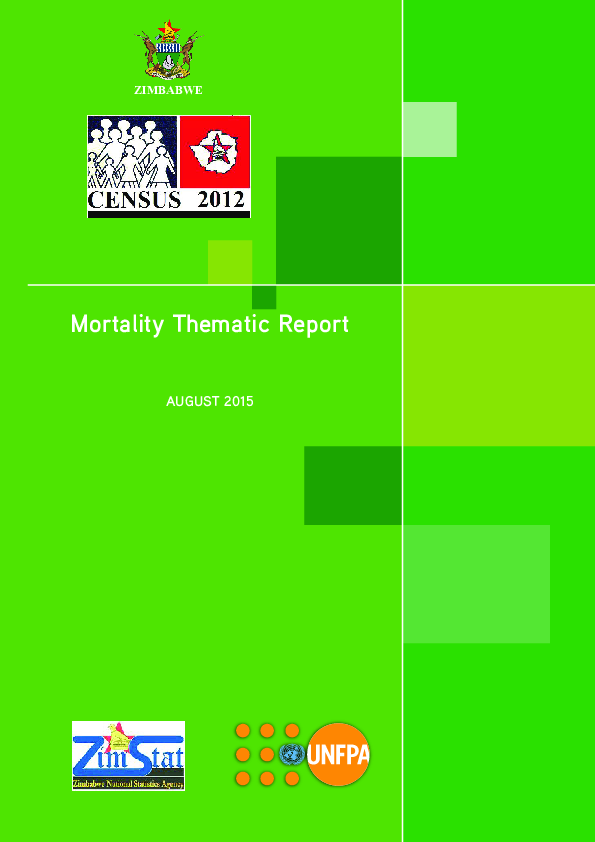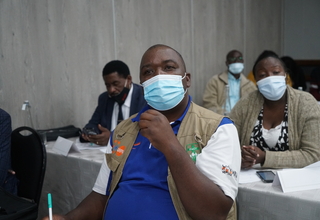The Zimbabwe National Statistics Agency (ZimStat) with support from the United Nations Population Fund (UNFPA) has launched the key findings from three thematic reports produced from the Zimbabwe 2012 Census. The thematic report focusing on Mortality provides a detailed analysis of data collected during the 2012 Census Report. The results of the 2012 Census were released in December 2013. The launch of this thematic report is the last specific objective of the 2012 Population Census of producing national population projections to enhance future planning. Statistics are a vital tool for economic and social development and reliable and timely data can help Zimbabwe in the formulation of development policies and programmes.

Publication
2012 Census Thematic Report on Mortality
No. of pages: 90
Publication date: August 2015
Publisher: ZIMSTAT UNFPA
Author: ZIMSTAT
In Zimbabwe data from civil registration is incomplete. As a result the country has relied on surveys to estimate its mortality indicators. This anslysis estimated maternal mortality, childhood mortality and constructed life tables using the 2012 Zimbabwe Population Census data. Since survey data, including censuses, is often unreliable due to reporting errors, indirect techniques were used to estimate childhood mortality.
Mortality in Zimbabwe worsened between 1992 and 2002 and its trend follows that of HIV prevalence rates, showing that AIDS-related deaths dominated deaths during this period. A comparison of the 2002 and 2012 Population censuses shows that mortality in Zimbabwe significantly improved between the two censuses; so did maternal mortality, which reduced by half. This is mainly attributed to the availability of ARTs during the first decade of the millennium.
The trend of under 5 mortality was derived from various sources. These sources agree that underfive mortality has been declining in Zimbabwe during the past three decades. This decline is discernible up to the mid-1990s and it starts to increase thereafter due to the impact of HIV and AIDS on the population and the general deterioration of health services during the hyperinflationary period when the health sector suffered from a lack of resources and a shortage of staff. Under 5 mortality vary by background characteristics of the mother. Children born to women resident in urban areas had lower mortlity rates than those born to women resident in rural areas. Children of widowed women experienced the highest mortality among the other
marriage groups, the higher the educational attainment of the mother, the lower the infant mortality, mortality of children born to employed mothers were slightly higher than that of children born to mothers who were not employed, and children born to mothers with a disability had higher mortality than children born to mothers without a disability.
Life expectancy at birth declined between 1992 and 2002 and then increased between 2002 and 2012. The decline in life expectancy during the intercensus period 1992 to 2002 is attributed to AIDS-related deaths and the improvement between 2002 and 2012 is attributed to the availability
of ARTs, which meant that people could live longer with the virus than before. In fact life expectancy increased by 16.5 years between the two censuses .


